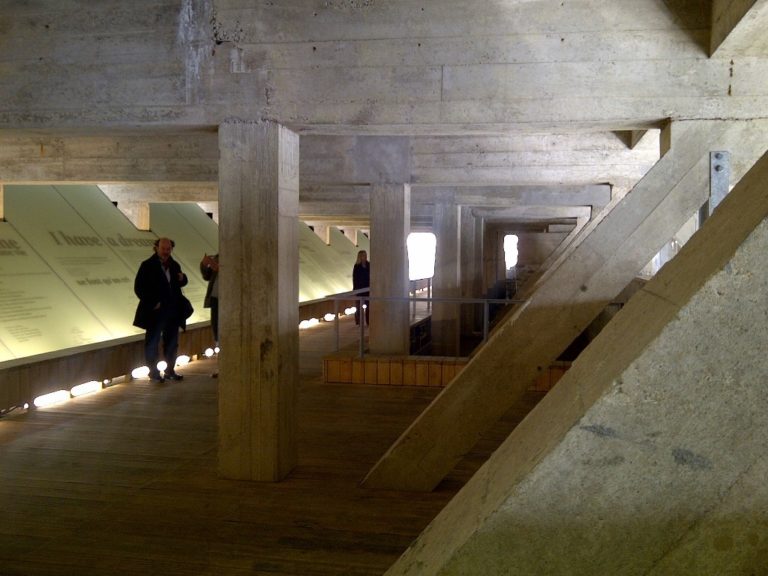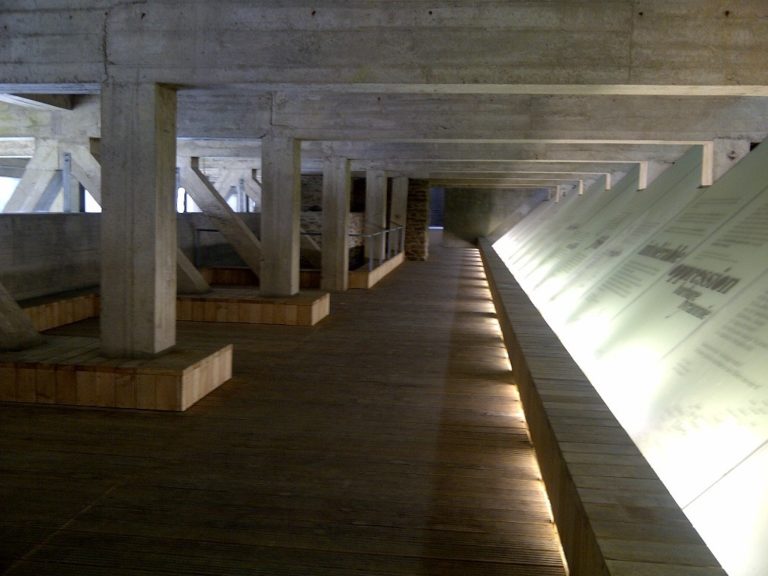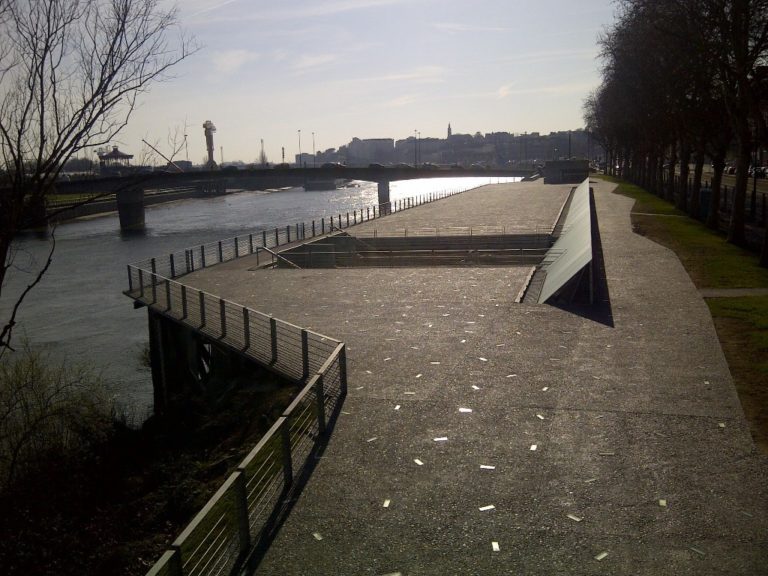Quai de la Fosse – Passerelle Victor-Schoelcher, Nantes, 2011
Co-author: Julian Bonder
Devoted to the victims of slavery and the slave trade, and to those who stood against the crime, the memorial was erected in Nantes, the premier French slave trading city in the 18th century. Its form is that of a quasi-architectural site that stresses the relationships between memory and public space.
The memorial is situated at the Quai de la Fosse, near the harbor, one of the hubs of triangular trade between Europe and America (delivering slaves to American growers of cash crops exported to Europe), and near a footbridge named after Victor Schoelcher, an abolitionist and government minister who greatly contributed to the abolition of slavery in France in 1848.
The project consists of two parts. The first, above-ground, is a broad landscaped pathway, covering over 7,000 square meters, stretching for some 350 meters along the Loire quays. Into the gravel surface of this esplanade have been set 2,000 glass plaques: 1,710 recalling the slave-trading expeditions that set sail from Nantes, giving ship names and dates of departure; and 290 remembering the names of slave-trading posts and ports in Africa, the West Indies, the Americas, and the Indian Ocean.The other part is a 140-meter-long underground passage covering a total area of some 1,500 square meters. Alongside the passage runs a huge glass plaque, 90 meters long, displaying a collection of texts from all the continents affected by slave trading over the last five centuries. Visitors are welcomed by the Universal Declaration of Human Rights, and at the western end of the passageway are stated dates and places from the history of slave trading but also those related to the contemporaneous fight against enslavement. As the artist stresses, “The river’s vicinity is important, as its levels rise and fall with the ebbs and flows of the Atlantic. At this shore anchored all the slave ships.”
The Nantes town council decided to erect a commemorative monument at Quai de la Fosse in 1998, on the 150th anniversary of the abolition of slavery in France. In 2002, following an international competition, the town selected a project by Krzysztof Wodiczko, designed in association with architect Julian Bonder. Construction work began in 2010.




